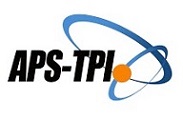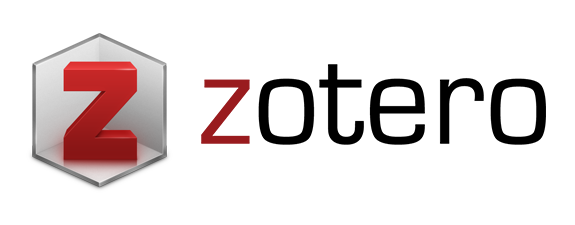Pengaruh Blended Learning DLPCA Models Terhadap Kemampuan Numerasi Siswa
Abstract
In the Basic Programming subject, it contains numeracy skills. Meanwhile the 2018 PISA results stated that students' numeracy skills were weak. Basic Programming itself is a mandatory prerequisite material for vocational high school students which is quite difficult but very important to master. The application of Blended Learning DLPCA Models (BL-DLPCA Models) learning strategies is carried out to get the combined advantages of online learning and face-to-face learning. BL-DLPCA Models have a syntax namely Discover, Learn, Practice, Collaborate and Asses which aims to integrate instructors, students and are ready to use technology to meet challenges in learning. The use of BL-DLPCA Models learning strategies aims to improve students' numeracy skills in Basic Programming subjects. Quasi-experiment quantitative research design type pottest only control group design. The experimental group applied the BL-DLPCA Models and the both control group applied online and face-to-face learning strategies respectively. The results of the study stated that the use of BL-DLPCA Models learning strategies had a better effect on students' numeracy abilities in Basic Programming subjects compared to online and face-to-face learning strategies.
Abstrak
Didalam mata pelajaran Pemrograman Dasar memuat kemampuan numerasi. Sementara itu hasil PISA 2018 yang menyatakan bahwa lemahnya kemampuan numerasi siswa. Pemrograman Dasar sendiri merupakan materi wajib prasyarat siswa sekolah menengah kejuruan yang cukup sulit tetapi sangat penting untuk dapat dikuasai. Penerapan strategi pembelajaran Blended Learning DLPCA Models (BL-DLPCA Models) dilakukan untuk mendapatkan gabungan keuntungan dari pembelajaran online dan pembelajaran tatap muka. BL-DLPCA Models memiliki syntax yaitu Menemukan (Discover), Mempelajari (Learn), Berlatih (Practice), Berkolaborasi (Collaborate) dan Dinilai (Asses) bertujuan mengintergasikan instruktur, siswa dan siap menggunakan teknologi untuk memenuhi tantangan dalam pembelajaran. Penggunaan strategi pembelajaran BL-DLPCA Models bertujuan untuk meningkatkan kemampuan numerasi siswa pada mata pelajaran Pemrograman Dasar. Penelitian kuantitatif quasi-eksperiment design tipe pottest only control group design. Pada kelompok eksperimen menerapkan BL-DLPCA Models dan dua kelompok kontrol lain masing-masing menerapkan pembelajaran online dan pembelajaran tatap muka. Hasil penelitian menyatakan bahwa penggunaan strategi pembelajaran BL-DLPCA Models memberikan pengaruh terhadap kemampuan numerasi siswa pada mata pelajaran Pemrograman Dasar lebih baik dibanding dengan strategi pembelajaran online maupun tatap muka.
Keywords
Full Text:
PDFReferences
Agustina, E., & Zayyadi, M. (2023). Kemampuan Literasi Numerasi Siswa Di Sekolah Inklusi. Jurnal Program Studi Pendidikan Matematika, 9(1), 15-20.
Annamalai, N., Loo, Q., Leong, L.-M., & Mangasleswaran, S. (2021). Online flipped classroom in English language grammar learning during the COVID-19 pandemic. Asia Pasific Journal Of Educators Education, Volume 36(2), 141-163.
Aslamiyah, T. A., Setyosari, P., & Praherdhiono, H. (2019). Blended Learning dan Kemandirian Belajar Mahasiswa Teknologi Pendidikan. Jurnal Kajian Teknologi Pendidikan, 2(2), 109-114.
Baharuddin, M. R., Sukmawati, & Christy. (2022). Deskripsi Kemampuan Numerasi Siswa Dalam Menyelesaikan Operasi Pecahan. Pedagogy, 6(2), 90-101.
Belfali, Y. (2018). PISA 2018 Results. OECD.
Berga, K., Vadnais, E., Nelson, J., Johnston, S., Buro, K., Hu, R., & Olaiya, B. (2021). Blended learning versus face-to-face learning in an undergraduate nursing health assessment course: A quasi-experimental study. Nurse Education Today, Volume 96, 104622.
Chiu, T. (2021). Digital Support for Student Engagement in Blended Learning on Self Determination Theory. Computers in Human Behaviour, Volume 124, 106909.
Cutcheon, K., & Lohan, M. (2018). Online learning versus blended learning of clinical supervisee skills with pre-registration nursing students: A randomised controlled trial. International Journal of Nursing Studies, Volume 82, 30-39.
Doddy. (2020). Buku Saku Merdeka Belajar. Jakarta: Kemendikbud RI.
Erlyana, R., Nugraheni, P., & Yuzianah, D. (2023). Deskripsi Kemampuan Literasi Numerasi Siswa SD. Jurnal Theorems (The Original Reasearch Of Mathematics), 7(2), 193-200.
Finlay, M., Tinnion, D., & Simpson, T. (2022). A Virtual Versus Blended Learning Approach to Higher Education During The COVID-19 Pandemic: The Experiences of a Sprot and Exercise Science Student Cohort. Journal of Hospitallity, Leisure, Sport and Tourism Education, Volume 30, 100363.
Grolien, H., Christoffersen, T., Ringstad, O., & Lugo, R. (2021). A blended learning teaching strategy strengthens the nursing students’ performance and self-reported learning outcome achievement in an anatomy, physiology and biochemistry course –A quasi-experimental study. Nurse Education in Practice, Volume 52, 103046.
Irawan, P. L., & Nirmalasari, Y. (2022). Pelatihan Dasar Pemrograman Untuk Membangkitkan Minat Siswa Pada Dunia Pemrograman Di SMK Kristen Elim. Prosiding Konferensi Nasional Pengabdian Masyarakat (KOPEMAS), 3(1), 406-414.
Kacetl, J., & Semradova, I. (2020). Reflection on Blended Learning and E-learning-Case Study. Procedia Computer Science, Volume 176, 1322-1327.
Lapitan Jr, L., Tiangco, C., Sumalinog, D., Sabarillo, N., & Diaz, J. (2021). An Effective Blended Online Teaching and Learning Strategy During The COVID-19 Pandemic. Educational for Chemical Engineers, Volume 35, 116-131.
Mali, D., & Lim, H. (2021). How do students perceive face-to-face/blended learning as a result of the Covid-19 pandemic? The International Journal of Management Education, Volume 19, 100552.
Muller, C., & Mildenberger, T. (2021). Facilitating flexible learning by replacing classroom time with an online learning environment: A systematic review of blended learning in higher education. Educational Research Review, Volume 34, 100394.
Mustamiin, M., Suheryadi, A., & Puspaningrum, A. (2023). Penerapan Sistem Evaluasi Pembelajaran Pemrograman Terintegrasi Dengan Online Judge Di SMK. Jurnal Pengabdian Kepada Masyarakat (PEKAMAS), 2(2), 61-67.
Perdana, R., & Suswandari, M. (2021). Literasi Numerasi Dalam Pembelajaran Tematik Siswa Kelas Atas Sekolah Dasar. Absis Mathematics Education Journal, Volume 3(1), 9-15.
Ramadani, A. D., Sulthoni, & Wedi, A. (2019). Faktor-faktor Yang Berpengaruh Terhadap Implementasi Blended Learning Di Jurusan Teknologi Pendidikan Universitas Negeri Malang. Jurnal Kajian Teknologi Pendidikan, 2(1), 62-67.
Rasdiyanti, Y., Wangge, M. C., Wewe, M., Bela, M. E., & Bhoke, W. (2023). Profil Kemampuan Literasi Numerasi, Digital dan Budaya Siswa Kelas IV UPTD SD Negeri Riominsi. Jurnal Ilmiah Mandala Education (JIME), 9(1), 557-564.
S, U., Dartono, & Trilaksono, A. R. (2023). Pelatihan Dasar Pemrograman Bahasa Java Untuk Siswa SMK Tunas Harapan Jakarta. Jurnal Pengabdian Kepada Masyarakat (SWADIMAS), 1(1), 1-6.
Saniah, S. L., & Nindiasari, H. (2023). Efektifitas FLipped Classroom Diintegrasikan Dengan Model Discovery Learning Terhadap Kemampuan Numerasi Ditinjau Dari Disposisi Matematis Siswa SMA. Jurnal Pembelajaran Matematika Inovatif, 6(1), 151-158.
Shoimin, A. (2014). Model Pembelajaran Inovatif dalam Kurikulum 2013 (1 ed.). Jakarta: Ar-Ruzz Media.
Soepriyanto, Y., & Kuswandi, D. (2021, September). Gamification Activities for Learning Visual Object-Oriented Programming. In 2021 7th International Conference on Education and Technology (ICET) (pp. 209-213). IEEE.
Suprayitno, T. (2019). Pendidikan di Indonesia Belajar Dari Hasil PISA 2018. Jakarta: Kemendikbud RI.
Suwannaphisit, S., Anusitviwat, C., Tuntarattanapong, P., & Chuaychoosakoon, C. (2021). Comparing the effectiveness of blended learning and traditional learning in an orthopedics course. Annals of Medicine and Surgery, Volume 72, 103037.
Wardani, D. N., Toenlioe, A. J., & Wedi, A. (2018). Daya Tarik Pembelajaran Di Era 21 Dengan Blended Learning. Jurnal Kajian Teknologi Pendidikan, 1(1), 13-18.
Xu, N. (2021). Research on Blended Teaching Model Applied in College English Grammar Teaching from the Perspective of TDT Approach—A Case Study of Guangzhou Donghua Vocational College. Proceedings of the 2021 4th International Conference on Humanities Education and Social Sciences, Volume 615, 510540.
Yamaguchi, S., Kondo, H., Ohnishi, Y., & Nishino, K. (2019). Analysis of Learning Activities and Effects on Blended Lectures. Procedia Computer Science, Volume 159, 1568-1575.
DOI: http://dx.doi.org/10.17977/um038v6i32023p173
Refbacks
- There are currently no refbacks.
Copyright (c) 2023 Sila Nur Ma'rifah, Dedi Kuswandi, Yerry Soepriyanto

This work is licensed under a Creative Commons Attribution-ShareAlike 4.0 International License.
JKTP: Jurnal Kajian Teknologi Pendidikan published by Department of Educational Technology, Faculty of Education, State University of Malang in Collaboration with Asosiasi Program Studi Teknologi Pendidikan Indonesia (APS TPI).
Publisher Address:
Lab. Teknologi Pendidikan, Gd.E2, Lt.1
Fakultas Ilmu Pendidikan Universitas Negeri Malang
Jl. Semarang 5, Kota Malang Email: jktp.fip@um.ac.id
========================================================================================================
| INDEXED BY | TOOLS | PLAGIARISM CHECK | ARTICLE TEMPLATE |
|
|

JKTP: Jurnal Kajian Teknologi Pendidikan is licensed under a Creative Commons Attribution-ShareAlike 4.0 International License.
JKTP Statistics (Since July 13th, 2020)






.png)












